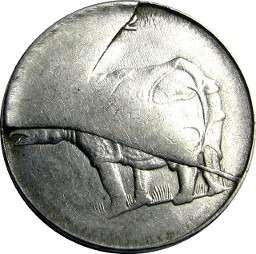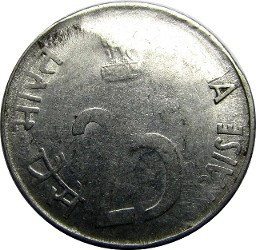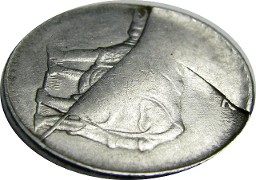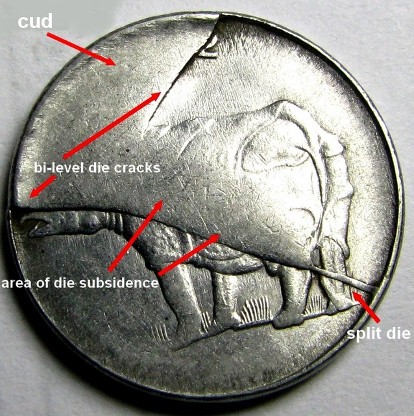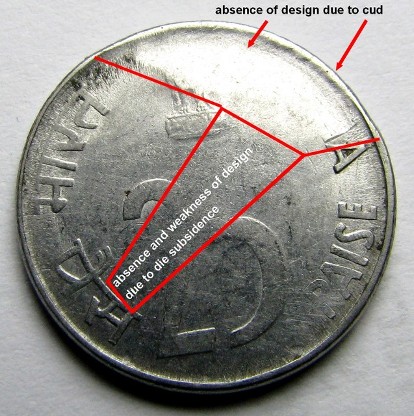PART IV. Die Errors:
Die deterioration/deformation errors:
Die Subsidence (a.k.a., sunken die)
Definition: Die subsidence is a form of plastic deformation that results in a portion of the die face sinking in. The term “subsidence” is derived from geology. It means a sinking land surface. A synonym for die subsidence error is “sunken die error”. The coin itself will show a bulge on one face. The opposite face may or may not show weakness in the design. It rather depends on how deeply the die face recedes.
The appearance of die subsidence errors is highly variable. It can be local or global (affecting the entire die face). Localized forms can be compact, elongated, circular, or oblong.
Die subsidence errors are often associated with cracking. The die cracks (conventional or bi-level) can skirt or penetrate the zone of subsidence. Other errors sometimes found in association with die subsidence errors include split dies, shattered dies, interior die breaks, retained interior die breaks, and retained cuds.
The causes of die subsidence errors are conjectural. They may reflect an abnormally soft interior that results from improper heat treatment (e.g., cooling, heating, tempering, quenching). They may reflect an intrinsic flaw in the die steel or the use of the wrong type of steel. Subsurface cavities, or pockets of low-density contaminants such as slag might also contribute to the formation of a zone of subsidence.
Note: Several specimens follow
One of the best-known and most readily available die subsidence errors is the 1924-S “goiter” cent. A zone of subsidence crosses Lincoln’s neck looking more like a distended external jugular vein than an enlarged thyroid gland. The swelling is flanked by two thin die cracks. Uncirculated specimens show the details of Lincoln’s neck continuing uninterrupted across the bulge.
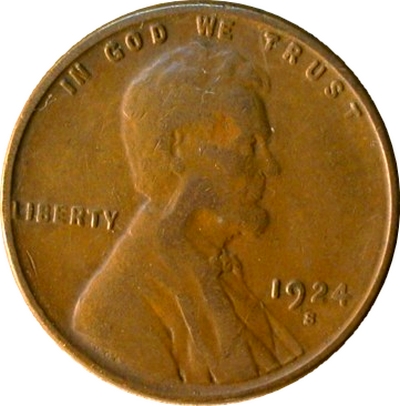
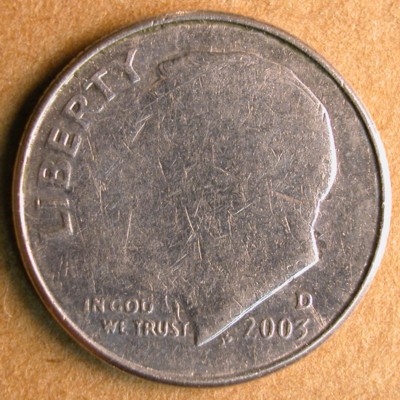
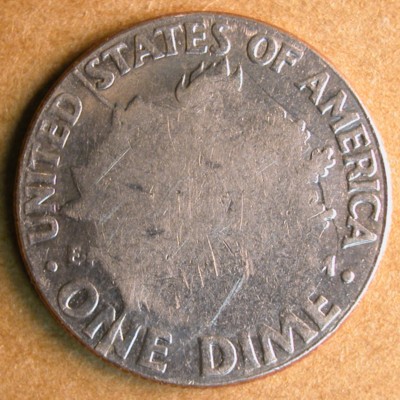
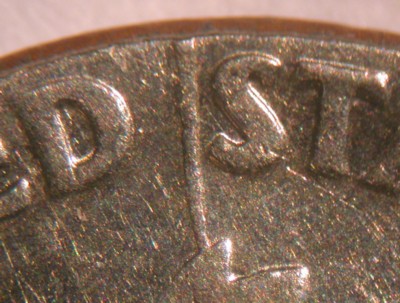
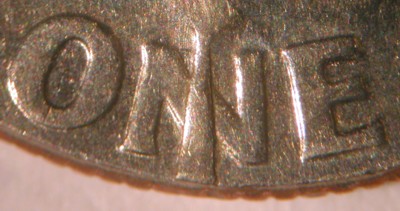
Shown here is an Indian 25 paise with a die subsidence error in association with a split die and what might be either a cud or a retained cud.
